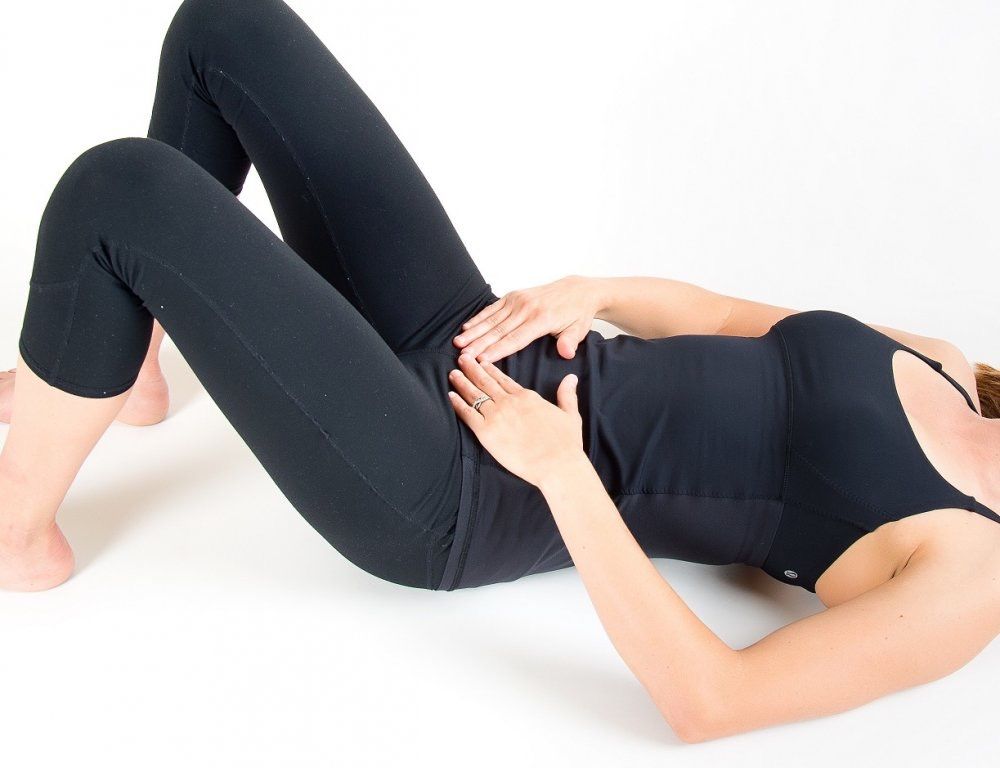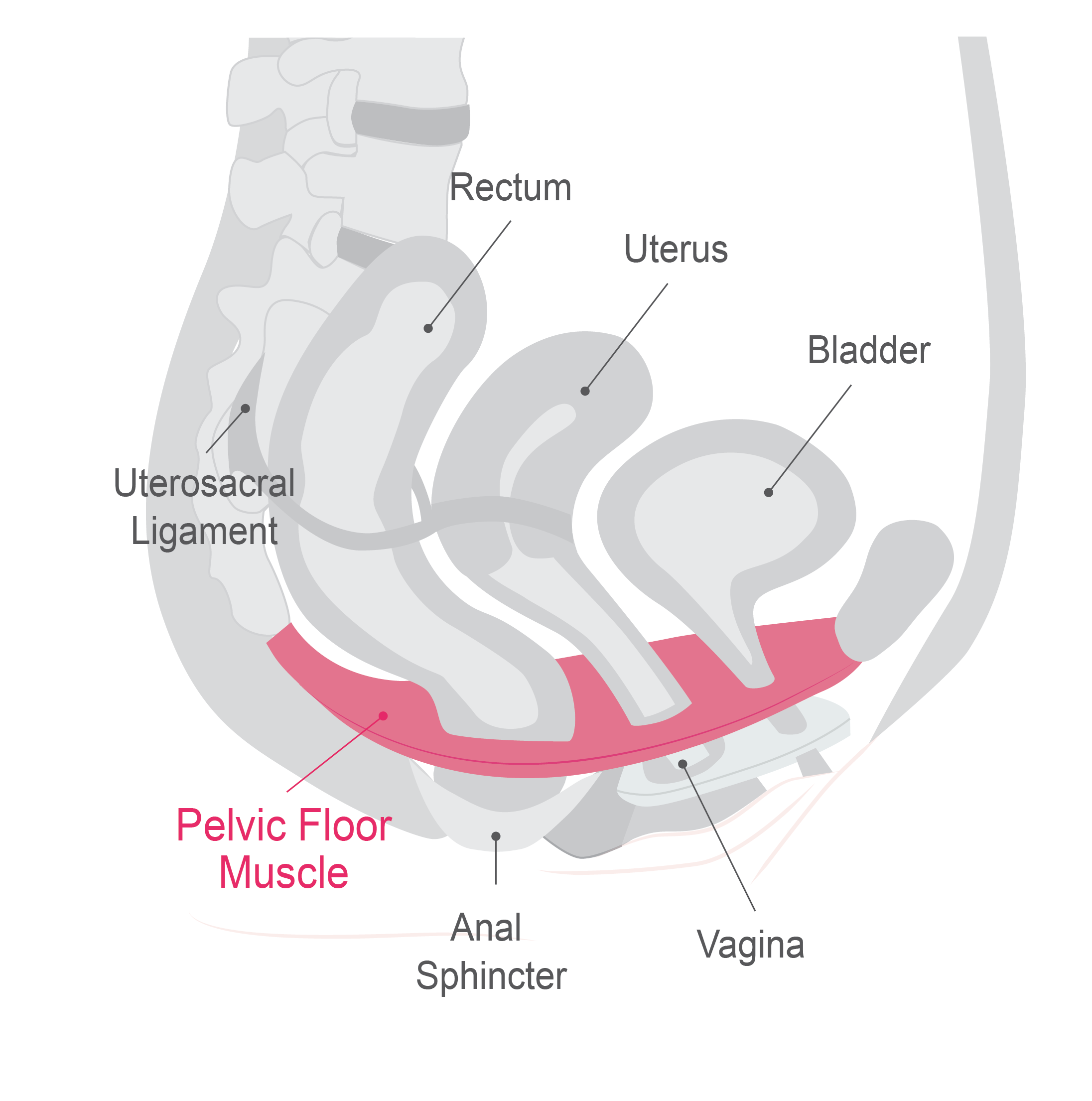Picture this: you’re mid-laugh, and a sudden, unexpected leak catches you off guard. Or maybe you feel a constant pressure or discomfort in your pelvic region, making everyday activities feel challenging. These situations, while common, can be incredibly frustrating and embarrassing. Many women, and even men, struggle with pelvic floor dysfunction, which can stem from factors like childbirth, aging, or even just everyday stress. The good news? Pilates, a low-impact exercise system, has emerged as a potential solution to strengthen and support these vital muscles.

Image: rebelmovespilates.com
The pelvic floor muscles, like a hammock, hold everything in place, from your uterus and bladder to your bowels. They play a vital role in controlling bladder and bowel function, providing sexual sensation, and even impacting posture and core stability. Weak pelvic floor muscles can lead to urinary incontinence, fecal incontinence, pelvic organ prolapse, pain during intercourse, and even back pain. That’s why it’s so crucial to understand how pilates can help strengthen and retrain these essential muscles.
Understanding the Science Behind Pilates and Pelvic Floor Health
Pilates, a method developed by Joseph Pilates in the early 20th century, focuses on strengthening the core muscles, including the pelvic floor, through controlled movements and precise breathing techniques. The beauty of Pilates lies in its emphasis on mindfulness and form over brute force, making it a safe and effective option for people of all fitness levels.
The Power of Core Engagement
One of the main reasons Pilates is so effective for pelvic floor health is its focus on engaging the deep core muscles, known as the “powerhouse.” This powerhouse, which includes the pelvic floor, transverse abdominis, and diaphragm, acts as a stabilizing unit for the entire body. By consciously engaging these muscles during Pilates exercises, you create pressure that helps to support the pelvic organs and prevent leaks.
Imagine your core muscles as a basket, and your pelvic floor like the sturdy base holding all the items inside. When you engage your core, you create a strong and secure foundation for your pelvic floor to work effectively.
Targeted Exercises for Pelvic Floor Strengthening
Pilates incorporates specific exercises designed to stimulate and strengthen the pelvic floor muscles. These exercises often involve gentle squeezing, lifting, and releasing motions, mimicking the natural function of the pelvic floor. By practicing these movements regularly, you can improve muscle coordination, increase strength, and enhance endurance.
For example, a classic Pilates exercise known as the “Hundred” involves controlled breathwork and core engagement, which helps to engage the pelvic floor muscles indirectly. Other exercises like “Bridge,” “Teaser,” and “Roll-up” specifically target the abdominals and pelvic floor, strengthening them and improving stability.

Image: vibrance.com.my
Pilates in Action: Real-World Benefits
Now let’s delve deeper into the tangible benefits of Pilates for your pelvic floor:
Urinary Incontinence Relief
Many studies highlight the positive impact of Pilates on reducing urinary incontinence. One study published in the journal “International Urogynecology Journal” found that women who participated in a Pilates program for 12 weeks experienced a significant improvement in their symptoms of stress urinary incontinence.
The reason? Pilates strengthens the sphincter muscles and pelvic floor, allowing them to better control bladder function.
Improved Bowel Control
Pilates can also be beneficial for managing fecal incontinence, particularly for individuals who struggle with leakage due to weakened pelvic floor muscles. The exercises help to strengthen the muscles involved in bowel movements, improving control over the anal sphincter.
By strengthening the pelvic floor muscles, Pilates helps to reduce the risk of involuntary bowel movements.
Reduced Pelvic Organ Prolapse
Pelvic organ prolapse is a condition where the pelvic organs, such as the uterus, bladder, or rectum, drop down into the vagina. This can cause discomfort, pain, and even urinary or bowel problems.
Pilates, by strengthening the pelvic floor and surrounding muscles, helps to support and lift the pelvic organs, lessening the risk of prolapse or minimizing its symptoms.
Enhanced Sexual Function
A strong pelvic floor is essential for sexual health. Pilates exercises can improve blood flow to the pelvic region, enhance sensitivity, and contribute to a more pleasurable experience.
Improved muscle control and coordination also play a role in boosting sexual satisfaction and confidence.
Expert Insights and Actionable Tips
While Pilates offers a fantastic approach to pelvic floor strengthening, it’s essential to seek guidance from qualified professionals. Here are some insights from experts and actionable tips:
Consult a Pelvic Floor Physiotherapist
Before starting any Pilates program, it’s highly recommended to consult with a pelvic floor physiotherapist. They can assess your unique needs, identify any underlying issues, and provide personalized recommendations.
They can teach you proper techniques for engaging your pelvic floor muscles, ensuring you are performing exercises correctly and safely.
Look for Certified Pilates Instructors
When choosing a Pilates instructor, look for individuals certified in pelvic floor rehabilitation or with specialized training in women’s health. They can provide modifications and guidance tailored to individuals with pelvic floor concerns.
Start Slowly and Progress Gradually
Remember, consistency is key. Start with gentle exercises and gradually increase intensity and duration as your strength grows. Don’t push yourself too hard or rush the process.
Listen to your body, and stop if you experience any pain or discomfort.
Embrace the Mind-Body Connection
Pilates emphasizes the mind-body connection. By focusing your attention on your pelvic floor muscles, you can improve your awareness and control, enhancing their overall function.
Does Pilates Help With Pelvic Floor Muscles
The Bottom Line: Pilates for a Stronger, Healthier You
Pilates provides a safe and effective way to strengthen your pelvic floor muscles and address a range of pelvic floor concerns. From improving bladder and bowel control to enhancing sexual health, the benefits of Pilates extend far beyond just physical fitness. By incorporating Pilates into your routine, you can empower yourself with the knowledge and tools to take charge of your pelvic floor health and live a more confident and fulfilling life.
Remember, it’s about building a strong foundation for your overall well-being. So, take the first step, find a qualified instructor, and embark on your journey toward a healthier, more empowered you.






